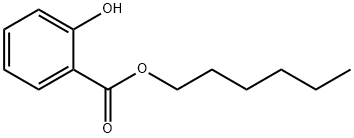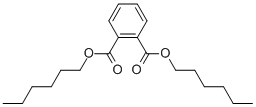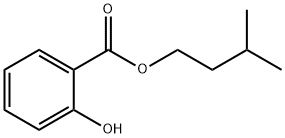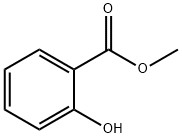A4740912
Hexyl salicylate , 98% , 6259-76-3
Synonym(s):
2-hydroxyhexyl ester benzoic acid;Hexyl 2-hydroxybenzoate
CAS NO.:6259-76-3
Empirical Formula: C13H18O3
Molecular Weight: 222.28
MDL number: MFCD00036487
EINECS: 228-408-6
| Pack Size | Price | Stock | Quantity |
| 25ml | RMB28.00 | In Stock |
|
| 100ML | RMB75.20 | In Stock |
|
| 500ML | RMB239.20 | In Stock |
|
| others | Enquire |
Update time: 2022-07-08
PRODUCT Properties
| Boiling point: | 290 °C (lit.) |
| Density | 1.04 g/mL at 25 °C (lit.) |
| vapor pressure | 0.077Pa at 23℃ |
| refractive index | n |
| Flash point: | >230 °F |
| storage temp. | Sealed in dry,Room Temperature |
| solubility | Chloroform (Sparingly), DMSO (Slightly) |
| pka | 8.17±0.30(Predicted) |
| form | liquid |
| color | Colourless oily liquid. |
| Odor | at 100.00 %. fresh herbal orchid green |
| Odor Type | herbal |
| biological source | synthetic |
| Water Solubility | 0.28g/L(37 ºC) |
| BRN | 2453103 |
| Cosmetics Ingredients Functions | FRAGRANCE PERFUMING |
| LogP | 5.5 at 30℃ |
| CAS DataBase Reference | 6259-76-3(CAS DataBase Reference) |
| NIST Chemistry Reference | N-hexyl salicylate(6259-76-3) |
| EPA Substance Registry System | Hexyl salicylate (6259-76-3) |
Description and Uses
Hexyl salicylate may be used as an internal standard for the determination of allergenic ester, benzyl salicylate in propolis specimens using gas chromatography-mass spectrometry (GC?MS), high-performance liquid chromatography (HPLC), and ultraviolet-visible (UV?Vis) spectrophotometry. It may also be used as a standard fragrance material for the quantification of the analyte in wastewater treatment plants using gas chromatography-mass spectrometry (GC?MS).
Safety
| Symbol(GHS) |   GHS07,GHS09 |
| Signal word | Warning |
| Hazard statements | H315-H317-H410 |
| Precautionary statements | P261-P264-P272-P273-P280-P302+P352 |
| Hazard Codes | Xi |
| Risk Statements | 36/37/38 |
| Safety Statements | 26-36 |
| RIDADR | UN 3082 9 / PGIII |
| WGK Germany | 2 |
| RTECS | DH2207000 |
| Toxicity | Both the acute oral LD50 value in rats and the acute dermal LD50 value in rabbits exceeded 5 g/kg (Moreno, 1975). |





